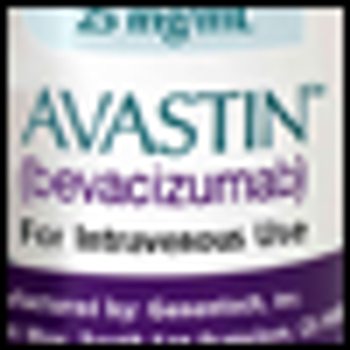
A recent study demonstrated that the novel oral Poly(ADP-ribose) polymerase (PARP) inhibitor, olaparib, provided a significant improvement in progression-free survival for women with serous ovarian cancer when used as a maintenance therapy.

Your AI-Trained Oncology Knowledge Connection!


A recent study demonstrated that the novel oral Poly(ADP-ribose) polymerase (PARP) inhibitor, olaparib, provided a significant improvement in progression-free survival for women with serous ovarian cancer when used as a maintenance therapy.

Human papillomavirus (HPV) is the most common sexually transmitted infection in the United States, with approximately 20 million people currently infected and an additional 6.2 million infected each year, despite increased media attention to HPV as a cause of cervical cancer and the availability of a vaccination to reduce HPV-associated cervical cancer.

The Swiss pharmaceutical company Roche and Roche Group member Genentech have announced that addition of bevacizumab (Avastin) to chemotherapy improved progression-free survival over chemotherapy alone in the phase III OCEANS ovarian cancer study, meeting the study’s primary endpoint.

The article by Dr. Echarri Gonzalez and her colleagues regarding intraperitoneal (IP) chemotherapy for women with epithelial ovarian cancer provides a comprehensive yet practical review of the critical questions surrounding the use of IP chemotherapy.

In 2006, after a third consecutive large-scale US phase III trial conducted by the Gynecologic Oncology Group (GOG) confirmed that use of intraperitoneal (IP) chemotherapy in optimally resected stage III epithelial ovarian cancer results in superior overall survival (OS) and/or progression-free survival (PFS),[

Epithelial ovarian cancer (EOC) spreads prominently within the peritoneal cavity. In fact, we now know that high-grade serous cancers are often of tubal origin, and their presentation as tubo-ovarian masses renders it likely that intraperitoneal spread occurs as an early event in their clinical evolution.

Early results from the ICON7 trial suggest that adding bevacizumab (Avastin) to standard chemotherapy in women with newly diagnosed ovarian cancer reduces the risk of disease progression during the first year of treatment.

Investigators from the German Cancer Research Center in Heidelberg reported on the effects of LMV-601 on cultured human cervical cells. LMV-601 is a phosphatidylcholine-specific phospholipase C (PC-PLC) inhibitor.

With the increased use of human papillomavirus vaccines such as Gardasil and Cervarix, the medical community is likely to see a decrease in cases of genital warts and other complications caused by several HPV strains. But it may be a decade or two before oncologists can expect to see a decline in cervical cancer rates attributable to the use of these relatively new vaccines.

Current advances in the field of medicine have aided in the early detection and treatment of cancer, leading to an increased rate of survivorship among cancer patients after an initial diagnosis.

Human papilloma virus often lurks in cervical tissue, and it can cause cancer there. But the infection is also often benign, particularly among young women. Biomarkers of transformation are proving useful in helping cytologists to decide when a suspicious-looking Pap result is truly a sign of trouble.

As outlined in the excellent, comprehensive review by Drs. Liu and Matulonis, ovarian cancer is the most lethal gynecologic malignancy in the United States, with approximately 16,000 deaths and 22,000 new cases yearly.[1] The vast majority of patients present with intra-abdominal spread of disease at the time of diagnosis, resulting in low overall cure rates. As outlined, patients are primarily managed with primary surgical resection and subsequent platinum-based chemotherapy.

Epithelial ovarian cancer is the leading cause of death from gynecologic malignancy in the United States, with approximately 15,000 deaths per year. Platinum/taxane doublets have long been considered the standard treatment regimen for advanced-stage disease; however, recent studies have sought to improve on the outcome from this therapy. Intraperitoneal (IP) chemotherapy has been shown to yield superior progression-free survival (PFS) and overall survival (OS); however, logistical problems and toxicities have limited more widespread adoption. Recent studies have also suggested that a “dose-dense” schedule of paclitaxel in combination with carboplatin may result in improved outcomes, and the impact of biological therapies in the first-line setting is under active investigation. In the setting of recurrent disease, preliminary results suggest that novel doublet regimens such as carboplatin and pegylated liposomal doxorubicin may have similar activity to standard platinum/taxane doublets while carrying a reduced risk of allergic reactions. Additionally, targeted therapy remains an active area of investigation, with evidence of activity from agents such as PARP inhibitors, anti-angiogenics, and PI3 kinase inhibitors. Here, we review recent advances in our understanding of ovarian cancer and its treatment in both the newly diagnosed and recurrent settings.

After years of maintaining the status quo in ovarian cancer treatment, a number of recent advances have challenged the paradigm based on intravenous (IV) taxane and platinum as the therapy of choice for advanced ovarian cancer. These new data are summarized concisely by Liu and Matulonis in this issue.

The Society of Gynecologic Oncologists conducted a demographic and practice survey and found that their members are shifting away from private practice into salaried positions. The survey also found an increase in the number of group or multispecialty practices.

Once thought a risk for malignancy, septated ovarian cystic tumors are actually mostly benign. A study at the University of Kentucky changes the standard of care for those patients.

Citing different studies, two physicians reach different conclusions as to whether ovarian cancer screening is worthwhile.

Physicians must engage and educate patients about significant risk for cardiovascular disease.

Mrs. S. is a 37-year-old Caucasian female who sought care at her home institution overseas during a period of several months for complaints of esophageal reflux, constipation, early satiety, increasing abdominal girth, and fatigue.

Postmenopausal women at average risk of ovarian cancer may benefit from ROCA (Risk of Ovarian Cancer Algorithm), a new ovarian cancer screening strategy that combines information about trends in CA-125 blood test results and age, followed by transvaginal ultrasound (TVU) as needed and referral to a gynecologic oncologist. Results of a prospective multicenter trial of ROCA were reported at the 44th annual meeting of ASCO (abstract 5003). Results of ROCA testing were used to categorize women as low risk (requiring a repeat CA-125 test in 1 year); intermediate risk (repeat CA-125 test in 3 months); or high risk (TVU and referral to a gynecologic oncologist, who decides, based on clinical findings and the TVU result, whether the patient needs to undergo surgery).

Postmenopausal women who regularly use painkillers have lower estrogen levels, which could lead to a decreased risk of breast or ovarian cancer.

Of the predominant gynecologic cancers, cancer of the uterine cervix is the least common, with only 11,270 new cases anticipated in the United States in 2009. Nevertheless, approximately 4,070 women die of cancer of the uterine cervix annually in the United States.

Cervarix has won FDA approval for the prevention of cervical pre-cancers and cervical cancer associated with HPV-16 and HPV-18 for use in girls and young women (ages 10-25), according to GlaxoSmithKline.

The US Food and Drug Administration (FDA) has approved GlaxoSmithKline’s human papillomavirus bivalent (types 16 and 18) vaccine, recombinant (Cervarix) for the prevention of cervical precancers and cervical cancer associated with oncogenic human papillomavirus (HPV) types 16 and 18 for use in girls and young women (aged 10–25).

Comparative uptake of two radiotracers allows characterization of tumor.